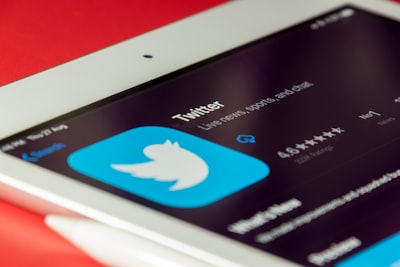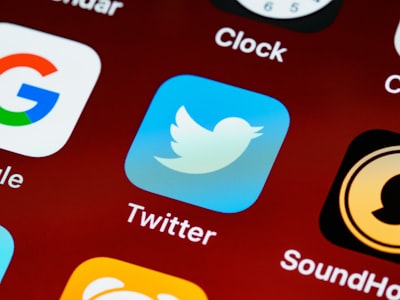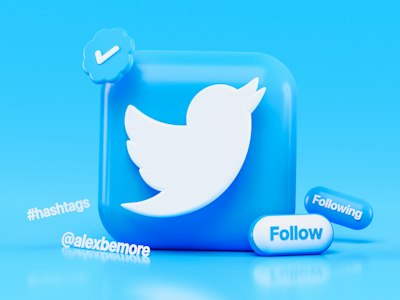
Key Highlights
- Twitter marketing is a powerful digital marketing strategy that can help businesses increase brand awareness, generate conversions, and build an engaged community.
- With over 320 million monthly active users, Twitter provides businesses with a unique opportunity to connect with their target audience and foster strong relationships.
- To succeed on Twitter, businesses need to have a complete and professional Twitter profile, create engaging and relevant content, and leverage the platform’s features such as hashtags, polls, and Twitter ads.
- It’s important to regularly update your profile and content, stay abreast of trends and relevant conversations, measure your Twitter marketing success using analytics, and adjust your strategy based on the insights you gather.
- While Twitter marketing can be a valuable tool for businesses, it’s important to avoid common mistakes such as over-promotion without engagement and ignoring the importance of visual content.
Introduction
Twitter marketing is a digital marketing strategy that leverages the power of Twitter, a popular social media platform with millions of active users. With its fast-paced nature and real-time updates, Twitter provides businesses with a unique opportunity to connect with their target audience, increase brand awareness, and drive traffic to their website.
In this beginner’s guide to Twitter marketing, we will explore the various aspects of this powerful marketing strategy and provide you with the knowledge and tools you need to succeed on Twitter. Whether you’re a small business owner looking to expand your online presence or a marketing professional wanting to enhance your social media strategy, this guide will help you navigate the world of Twitter marketing.
From understanding the potential of Twitter for businesses to setting up a professional profile, developing an effective content strategy, and maximizing Twitter features for marketing success, we will cover everything you need to know to launch a successful marketing campaign. We will also discuss advanced techniques, common mistakes to avoid, tips for maintaining an active and engaging X presence, and how to measure your Twitter marketing success.

So, let’s dive in and learn how to harness the power of Twitter for your marketing efforts.
Understanding Twitter’s Potential for Businesses
X, with its 320 million+ monthly active users, has become one of the most popular social media platforms for businesses. It offers a unique opportunity for brands to connect with their target audience, increase brand awareness, and generate conversions. With its real-time updates and fast-paced nature, X allows businesses to engage with their audience in a timely manner and build strong relationships.
Social media marketing has become an essential part of any business’s marketing strategy. By using X to promote your products or services, you can reach a wide audience of potential customers and drive traffic to your website. With the right digital marketing strategy, you can easily increase your brand awareness, generate conversions, and develop an engaged community.
One of the key advantages of X marketing is the ability to reach a large number of active users. With over 320 million monthly active users, X provides businesses with a vast audience to connect with. By creating compelling and relevant content, businesses can capture the attention of X users and increase their brand visibility.
Another advantage is its potential for brand awareness. X allows businesses to make their brand visible to a wide audience and establish a strong online presence. By consistently sharing valuable content and engaging with their followers, businesses can build brand loyalty and create a positive brand image.
Furthermore, X provides businesses with the opportunity to monitor and analyze their social media efforts. By using analytics, businesses can gain insights into their audience demographics, engagement rate, and the performance of their tweets. These insights can help businesses refine their marketing strategy and make data-driven decisions.
In summary, X offers a powerful platform for businesses to connect with their target audience, increase brand awareness, and generate conversions. With its large user base and real-time updates, X provides businesses with a unique opportunity to build an engaged community and drive traffic to their website.
Modern Marketing Impact
X has had a significant impact on modern marketing, particularly in the realm of social media. With its real-time updates and fast-paced nature, X has become a go-to platform for businesses looking to engage with their target audience and increase brand awareness.
One of the key ways in which X has influenced modern marketing is through its ability to amplify marketing efforts. By leveraging the power of X, businesses can reach a wide audience of potential customers and promote their products or services in a timely manner. X allows businesses to share updates, promotions, and valuable content with their followers, increasing the visibility of their brand and driving engagement.

Why X is a Must for Your Marketing Strategy
With over 320 million monthly active users, X is a must for any business looking to enhance its marketing strategy. X provides businesses with a unique opportunity to connect with their target audience, increase brand awareness, and drive engagement.
Preparing for Twitter Marketing: What You Need
Before diving headfirst into Twitter marketing, there are a few key things you need to ensure you have in place. These include a complete and professional X profile, the necessary tools and resources to manage your presence, and a clear understanding of your target audience and marketing objectives. By having these foundational elements in place, you can set yourself up for success in your marketing efforts.
Essential Tools and Resources for Starting Out
When starting out with Twitter marketing, there are a few essential tools and resources that can help you effectively manage your Twitter presence and maximize your marketing efforts. These include:
- A content calendar: Use a content calendar to plan and organize your tweets, ensuring a consistent and strategic approach to your content.
- A dedicated Twitter handle: Choose a Twitter handle that is aligned with your brand and easy for your audience to remember and recognize.
- A social media management platform: Utilize a social media management platform like Sprout Social or Hootsuite to schedule and publish your tweets, monitor engagement, and analyze your Twitter performance.
- Hashtag research tools: Use hashtag research tools like Hashtagify or RiteTag to discover relevant and popular hashtags that can help increase the reach of your tweets.
- Twitter analytics: Take advantage of Twitter’s built-in analytics tool to track and measure the performance of your tweets, understand your audience demographics, and identify areas for improvement.
By utilizing these tools and resources, you can streamline your Twitter marketing efforts and ensure that you are effectively reaching and engaging with your audience.
Professional Twitter Profile Only
Your Twitter profile is the face of your brand on the platform and plays a crucial role in attracting and engaging your audience. To set up a professional Twitter profile, follow these key steps:
- Choose a Twitter handle (username) that reflects your brand and is easy to remember.
- Use a high-quality profile picture that represents your brand or logo. Ensure that it is clear, professional, and recognizable.
- Write a compelling and concise bio that highlights your brand’s unique value proposition and resonates with your target audience.
- Include relevant hashtags in your bio to improve discoverability and make it easier for users to find your profile.
- Select a visually appealing header image that complements your brand and showcases your products, services, or company culture.
- Provide a link to your website or a specific landing page in your profile to drive traffic and encourage conversions.
- Pin a tweet to the top of your profile that showcases your brand’s latest news, promotions, or important information.
- Regularly update your profile with fresh and engaging content to keep your audience informed and interested in your brand.
By following these guidelines, you can create a professional Twitter profile that effectively represents your brand and attracts your target audience.

Step-by-Step Guide to Launching Your Twitter Campaign
Launching a successful Twitter campaign requires careful planning and a strategic approach. Follow these steps to ensure your Twitter campaign is a success:
- Identify Your Target Audience: Understand your target audience’s demographics, interests, and pain points.
- Craft Your Brand’s Voice and Message: Develop a unique brand voice and message that resonates with your target audience.
- Develop an Effective Content Strategy: Plan and create valuable and engaging content that aligns with your brand’s voice and objectives.
- Schedule and Publish Your Tweets: Use a content calendar and social media management platform to schedule and publish your tweets at optimal times.
- Engage With Your Followers and Build Community: Respond to comments, retweets, and mentions, and actively engage with your followers to build a loyal community.
By following these steps, you can launch a successful Twitter campaign that effectively reaches and engages your target audience.
Step 1: Identifying Your Audience
One of the first steps in launching a successful Twitter campaign is identifying your target audience. Understanding who your target audience is and what they are interested in will help you tailor your content and messaging to effectively reach and engage them. Here are some key points to consider when identifying your target audience:
- Demographics: Consider the age, gender, location, and other demographic factors that are relevant to your target audience.
- Interests: Identify the interests, hobbies, and preferences of your target audience to create content that resonates with them.
- Pain Points: Understand the challenges and pain points that your target audience faces to provide valuable solutions and position your brand as a trusted resource.
- Twitter Audience: Analyze your Twitter followers and engagement metrics to gain insights into your existing audience and target similar users.
- Competitor Analysis: Study your competitors’ Twitter followers and engagements to identify potential overlap and areas for differentiation.
By understanding your target audience, you can tailor your Twitter campaign to effectively reach and engage the right people with the right message.
Step 2: Crafting Your Brand’s Voice and Message
Crafting your brand’s voice and message is essential for creating a consistent and compelling Twitter campaign. Your brand’s voice should reflect your brand’s personality, values, and unique selling proposition. Here are some tips for crafting your brand’s voice and message:
- Define Your Brand’s Personality: Determine whether your brand’s voice is serious, playful, authoritative, or casual. This will help guide your tone and language choices.
- Understand Your Target Audience: Tailor your brand’s voice and message to resonate with your target audience’s interests, values, and preferences.
- Be Consistent: Ensure that your brand’s voice and message are consistent across all your Twitter content and align with your overall brand identity.
- Use Language That Fits Your Brand: Choose words, phrases, and language that align with your brand’s personality and resonate with your target audience.
- Be Authentic: Be genuine and authentic in your communication, and avoid trying to sound like someone you’re not.
- Test and Refine: Monitor the response to your brand’s voice and message and make adjustments based on audience feedback and engagement.
By crafting a clear and consistent brand voice and message, you can create a compelling Twitter campaign that effectively communicates your brand’s value and resonates with your target audience.
Step 3: Effective Content Strategy
An effective content strategy is crucial for a successful Twitter campaign. Your content strategy should align with your brand’s voice and message and provide value to your target audience. Here are some key steps for developing an effective content strategy:
- Determine Your Goals: Define the objectives of your Twitter campaign and align your content strategy with these goals.
- Choose Content Types: Identify the types of content that will resonate with your target audience. This may include blog posts, videos, infographics, or user-generated content.
- Plan Your Content Calendar: Use a content calendar to schedule and organize your content, ensuring a consistent and strategic approach.
- Research Trending Topics: Stay up-to-date on trending topics and incorporate them into your content strategy, when relevant.
- Provide Value: Create content that educates, entertains, or inspires your audience. Focus on solving their pain points and providing valuable information.
- Encourage Engagement: Include calls to action, questions, or prompts to encourage your audience to engage with your content and start a conversation.
- Monitor Performance: Track the performance of your content using Twitter analytics and adjust your strategy based on insights and feedback.
By developing an effective content strategy, you can create valuable and engaging content that resonates with your target audience and drives results for your Twitter campaign.
Step 4: Scheduling and Publishing
Scheduling and publishing your tweets at the right time is crucial for maximizing engagement and reaching your target audience. Here are some key steps for scheduling and publishing your tweets effectively:
- Use a Content Calendar: Plan your tweets in advance using a content calendar. This will help you maintain a consistent posting schedule and ensure that your content is aligned with your overall strategy.
- Identify Optimal Posting Times: Use Twitter analytics and other social media management tools to determine the times when your audience is most active and likely to engage with your tweets.
- Schedule Your Tweets: Use a social media management platform like Sprout Social or Hootsuite to schedule your tweets in advance. This will allow you to maintain a consistent posting frequency and reach your audience at the right times.
- Consider Time Zones: If your target audience is located in different time zones, adjust your posting schedule accordingly to ensure that your tweets reach them when they are most likely to be online.
- Monitor and Engage: Regularly monitor your tweets for engagement and respond to comments, retweets, and mentions. This will help you build relationships with your audience and foster engagement with your content.
By scheduling and publishing your tweets strategically, you can maximize engagement, reach your target audience at the right time, and build a strong online presence for your brand.

Step 5: Engaging Followers and Building Community
Engaging with your followers and building a strong community is crucial for the success of your Twitter campaign. Here are some key steps for engaging with your followers and building a community on Twitter:
- Respond to Comments and Mentions: Regularly monitor your tweets for comments and mentions and respond in a timely and personalized manner. This shows that you value your audience and fosters engagement with your brand.
- Retweet and Share User-Generated Content: Show appreciation for your followers by retweeting and sharing their content. This not only builds goodwill but also encourages them to continue engaging with your brand.
- Participate in Twitter Chats and Trending Conversations: Join relevant Twitter chats and participate in trending conversations to increase your visibility and engage with a wider audience.
- Follow and Interact with Influencers in Your Industry: Identify influencers in your industry and follow and interact with them. This can help you build relationships and increase your brand’s visibility.
- Encourage User Engagement: Include calls to action, questions, or prompts in your tweets to encourage your audience to engage with your content and start a conversation.
By actively engaging with your followers and building a community on Twitter, you can foster a sense of loyalty, increase brand visibility, and drive engagement for your Twitter campaign.
Maximizing Twitter Features for Marketing Success
Twitter offers a range of features that can be leveraged to maximize your marketing success. From hashtags to Twitter polls, these features can enhance your content visibility, drive engagement, and reach new audiences. By understanding and utilizing these features effectively, you can take your Twitter marketing to the next level and achieve your goals.
Leveraging Hashtags for Greater Reach
Hashtags are a powerful tool for increasing the reach of your tweets and connecting with a wider audience on Twitter. Here are some tips for leveraging hashtags effectively:
- Use Relevant Hashtags: Research and use hashtags that are relevant to your industry, target audience, and the content of your tweet. This will help your tweet appear in relevant hashtag feeds and reach users who are interested in your topic.
- Explore the Explore Tab: Monitor the Explore tab on Twitter to discover trending hashtags and join relevant conversations. This can help increase the visibility of your tweets and reach new audiences.
- Engage with Hashtag Communities: Participate in hashtag communities and engage with other users using the same hashtag. This can help you build relationships, increase your brand visibility, and drive engagement.
- Create Your Own Hashtags: Create your own branded hashtags for specific campaigns, events, or promotions. This can help create buzz, encourage user-generated content, and make it easier for users to find and engage with your brand.
By leveraging hashtags effectively, you can increase the reach of your tweets, connect with a wider audience, and drive engagement for your Twitter marketing campaign.
The Power of Polls
X polls are a valuable tool for engaging your audience, gathering feedback, and driving conversation on the platform. Here’s how to use polls effectively:
- Choose a Relevant Topic: Select a topic that is relevant to your brand, industry, or target audience. This will ensure that your poll resonates with your followers and encourages engagement.
- Keep it Simple: Keep your poll questions and answer options clear and concise. This will make it easier for users to participate and increase the likelihood of engagement.
- Encourage Participation: Promote your poll by retweeting it, pinning it to your profile, or including a call to action in your tweet. This will help increase visibility and encourage user participation.
- Share Results and Insights: Once your poll has ended, share the results and insights with your audience. This will create a sense of transparency and encourage further discussion and engagement.
By using X polls effectively, you can engage your audience, gather valuable insights, and drive conversation around your brand or industry.
18.2: Advanced X Marketing Techniques (250-300 words)
Once you have mastered the basics of X marketing, it’s time to explore some advanced techniques to take your strategy to the next level. Here are some advanced X marketing techniques to consider:
- Utilizing Analytics: Dive deep into your X analytics to gain insights into your audience demographics, engagement rate, and top-performing tweets. Use this data to refine your content strategy and optimize your Twitter marketing efforts.
- Running Ad Campaigns: Consider running Twitter ad campaigns to increase your reach, target specific audiences, and promote your products or services. Twitter offers various ad formats, including promoted tweets, promoted accounts, and promoted trends.
- Leveraging Advertising: Use Twitter’s advertising features, such as tailored audiences and keyword targeting, to reach the right audience at the right time. By targeting specific demographics, interests, or keywords, you can maximize the impact of your Twitter ads.
- Expanding Your Reach with Influencer Marketing: Collaborate with influencers in your industry to amplify your brand’s reach and engage with a wider audience. Partnering with influencers can help you tap into their followers’ trust and credibility, driving brand awareness and conversions.
- Incorporating Moments: Twitter Moments allow you to curate and showcase a collection of tweets around a specific topic or event. Use Twitter Moments to tell a story, highlight user-generated content, or provide in-depth coverage of industry news or trends.
- Testing and Experimenting: Continuously test and experiment with different strategies, content types, and engagement tactics to optimize your Twitter marketing efforts. Don’t be afraid to try new things and learn from the data and insights you gather.
By incorporating these advanced techniques into your Twitter marketing strategy, you can enhance your brand’s visibility, engagement, and overall success on the platform.

Advanced Twitter Marketing Techniques
Utilize advanced Twitter marketing techniques to elevate your strategy. Delve into Twitter analytics for valuable insights into audience behavior and optimization. Tailor content based on these data points to enhance engagement and conversion rates. Experiment with Twitter ads to target specific demographics effectively. Leverage social listening tools to monitor conversations and adapt campaigns in real-time for maximum impact. Incorporate interactive elements like Twitter polls and video content to boost user interaction. Stay updated on emerging trends such as Twitter Spaces for innovative marketing opportunities. Implement these strategies to propel your Twitter marketing efforts to new heights.
Utilizing Analytics for Informed Strategies
Twitter Analytics provides valuable insights into your Twitter marketing efforts, helping you make data-driven decisions and optimize your strategies. Here’s how to utilize Twitter Analytics effectively:
- Set Measurable Goals: Define specific goals for your Twitter marketing, such as increasing engagement rate or driving website traffic. Use Twitter Analytics to track your progress towards these goals.
- Monitor Audience Demographics: Gain insights into your audience demographics, including age, gender, location, and interests. Use this information to tailor your content and targeting strategies to better reach your target audience.
- Analyze Engagement Metrics: Track metrics such as impressions, retweets, likes, replies, and link clicks to understand which types of tweets and content resonate most with your audience. Use these insights to optimize your content strategy.
- Measure Campaign Performance: If running Twitter ad campaigns, analyze the performance of your ads using Twitter Analytics. Identify top-performing ads and optimize future campaigns based on these insights.
- Conduct Competitive Analysis: Use Twitter Analytics to compare your performance against that of your competitors. Analyze metrics such as follower growth, engagement rate, and tweet impressions to identify areas of improvement and opportunities for differentiation.
By utilizing Twitter Analytics effectively, you can gain valuable insights into your audience, measure the performance of your campaigns, and optimize your Twitter marketing strategies for success.
Ads for Targeted Campaigns
X ads can be a powerful tool for targeting specific audiences, increasing brand visibility, and driving conversions. Here’s how to effectively use X ads for targeted campaigns:
- Set Clear Objectives: Define your campaign objectives, whether it’s driving website traffic, increasing brand awareness, or generating leads. This will help guide your ad strategy and messaging.
- Choose the Right Ad Format: X offers various ad formats, including promoted tweets, promoted accounts, and promoted trends. Select the ad format that aligns best with your campaign goals and target audience.
- Target Specific Audiences: Utilize X‘s targeting options to reach specific demographics, interests, or keywords. Tailor your ad messaging to resonate with your target audience.
- Optimize Ad Creative: Create compelling ad creative that grabs attention, communicates your message effectively, and includes a clear call to action. Test and refine your ad creative based on performance data.
- Monitor and Adjust: Regularly monitor the performance of your ads using Analytics. Adjust your targeting, messaging, and ad placements based on the insights you gather.
By using Twitter ads effectively, you can reach the right audience, increase brand visibility, and drive conversions for your targeted campaigns.
Common Mistakes to Avoid
While Twitter marketing can be highly effective, there are common mistakes that businesses should avoid to ensure success. Here are some key mistakes to watch out for:
- Lack of a clear strategy: A well-defined X strategy is essential for achieving specific marketing goals. Without a clear strategy, businesses may end up posting random content without a cohesive message or purpose. It is important to define your target audience, create a content calendar, and set measurable goals to guide your X marketing efforts.
- Ignoring social listening: Social listening involves monitoring conversations and mentions of your brand. By actively listening to what your audience is saying, businesses can gain valuable insights, identify trends, and address customer concerns. Ignoring social listening can result in missed opportunities to engage with your audience and improve your brand reputation.
- Over-promotion without engagement: X is a social platform, and users expect engagement and interaction. Simply promoting your products or services without engaging with your audience can be seen as spammy and may result in a loss of followers. It is important to strike a balance between promotional content and engaging with your audience through likes, retweets, and responses to comments.
- Ignoring the importance of visual content: Visual content, such as images and videos, is highly engaging on X. Neglecting to include visual content in your tweets can result in lower engagement and reduced brand awareness. Incorporate eye-catching visuals that align with your brand identity to grab users’ attention and encourage them to interact with your tweets.
To avoid these common mistakes, businesses should develop a clear strategy, actively listen to their audience, engage with their followers, and prioritize the use of visual content in their tweets. By doing so, businesses can maximize the impact of their X marketing efforts and achieve better results.
Over-promotion Without Engagement
One common mistake businesses make in X marketing is over-promoting their products or services without engaging with their audience. While it’s important to promote your brand, constantly bombarding your followers with promotional tweets can be off-putting and result in a loss of followers.
Instead, businesses should focus on creating organic content that provides value to their audience. This can include sharing informative articles, industry insights, tips and tricks, and engaging in conversations with followers. By sharing valuable content, businesses can establish themselves as thought leaders in their industry and build trust with their audience.
Engagement is also key in X marketing. Businesses should actively respond to comments and mentions, retweet and like relevant content, and participate in relevant conversations. By engaging with their audience, businesses can foster a sense of community, increase brand awareness, and encourage followers to interact with their content.
To strike the right balance between promotion and engagement, businesses should follow the 80/20 rule – 80% of their tweets should provide value, while only 20% should be promotional in nature. This approach ensures that businesses are actively engaging with their audience and building relationships, rather than solely focusing on self-promotion.
By avoiding over-promotion and prioritizing engagement through organic content, businesses can create a positive brand image, increase brand awareness, and establish a loyal following on Twitter.
Ignoring the Importance of Visual Content
Visual content plays a crucial role in marketing. Ignoring the importance of visual content can result in missed opportunities to engage with your audience and capture their attention. Incorporating visual content, such as images and videos, in your tweets can significantly increase engagement and improve brand awareness.
Images are a powerful tool for conveying messages and emotions. They can be used to showcase products, share quotes, or provide visual representations of data or statistics. Including relevant and eye-catching images in your tweets can grab users’ attention and encourage them to interact with your content.
Videos are another effective form of visual content. Short videos can be used to demonstrate product features, share customer testimonials, or provide valuable information. Video content tends to be highly engaging and shareable, making it a great way to increase brand visibility and reach a wider audience.
When creating visual content for X, it’s important to keep in mind the platform’s specifications. Images should be optimized for X‘s recommended sizes to ensure they display properly across different devices. Similarly, videos should be formatted and sized appropriately to maximize their impact.
By incorporating visual content in your marketing strategy, you can enhance the overall user experience, increase engagement, and boost brand awareness. Remember to use high-quality visuals that align with your brand identity and resonate with your target audience to achieve the best results.
Regularly Updating Your Profile and Content
Regularly updating your X profile and content is essential for maintaining a professional and engaging brand presence. Your X profile serves as a digital representation of your brand, and it’s important to keep it up to date with accurate and relevant information.
Start by ensuring that your profile photo accurately represents your brand. Choose a high-quality image that is easily recognizable and aligns with your brand identity. This photo will appear next to your tweets and will be the first visual impression users have of your brand.
Next, review your bio and make any necessary updates. Your bio should concisely and effectively communicate your brand’s purpose and value proposition in 160 characters or less. Use keywords and hashtags relevant to your industry to increase the visibility of your profile in search results.
Regularly updating your content is also crucial for maintaining an engaging presence. Develop a content calendar and schedule regular tweets to stay active on the platform. Share a mix of informative and entertaining content that appeals to your target audience. Experiment with different formats, such as text, images, videos, and polls, to keep your content fresh and engaging.
By regularly updating your profile and content, you can ensure that your presence reflects your brand accurately and provides value to your audience. This will help to build brand loyalty, increase engagement, and attract new followers.

Trends and Relevant Conversations
Staying abreast of trends and relevant conversations is essential for businesses looking to maintain an active and engaging X presence. By participating in industry-related discussions and following the latest trends, businesses can position themselves as thought leaders and foster engagement with their audience.
Twitter trends provide valuable insights into the topics and hashtags that are currently popular among users. Monitoring these trends and joining the conversation can help businesses stay relevant and increase their visibility on the platform. By incorporating trending hashtags into their tweets, businesses can attract a wider audience and join in on relevant discussions.
Twitter Spaces, a relatively new feature on the platform, allows users to host and join live audio conversations. This provides a unique opportunity for businesses to engage with their audience in real-time and share valuable insights or answer questions. By hosting or participating in X Spaces, businesses can showcase their expertise, build relationships, and gain exposure to new audiences.
To stay abreast of trends and relevant conversations, businesses should follow industry influencers, participate in chats, and actively monitor relevant hashtags. By joining these conversations and offering valuable insights, businesses can position themselves as industry experts and attract an engaged and loyal following on Twitter.
Measuring Twitter Marketing Success
Measuring the success of your Twitter marketing efforts is crucial for understanding the impact of your strategy and making informed decisions for improvement. Twitter provides a range of analytics tools and metrics that can help businesses track their performance and evaluate the effectiveness of their marketing efforts.
One key metric to consider is the engagement rate, which measures how well your tweets are resonating with your audience. The engagement rate takes into account metrics such as likes, retweets, replies, and link clicks. By monitoring your engagement rate, you can determine which types of content perform best and make adjustments to optimize engagement.
X Analytics provides insights into your audience demographics, including their interests, location, and language. This information can help you tailor your content to better meet the needs and preferences of your target audience.
Other important metrics to track include follower growth, click-through rate, and impression reach. Follower growth indicates the success of your efforts to attract and retain followers, while click-through rate and impression reach provide insights into the effectiveness of your tweets in driving traffic to your website and reaching a wider audience.
By regularly analyzing your analytics, you can gain valuable insights into the performance of your marketing efforts and make data-driven decisions for optimization. Use these insights to refine your content strategy, identify opportunities for improvement, and ensure that your Twitter marketing efforts align with your overall business goals.
Key Performance Indicators (KPIs) to Track
Tracking key performance indicators (KPIs) is crucial for measuring the success of your Twitter marketing efforts. By monitoring and analyzing these metrics, you can gain valuable insights into the performance of your strategy and make data-driven decisions for improvement. Here are some key KPIs to track:
- Engagement rate: This metric measures the level of engagement your tweets receive, including likes, retweets, replies, and link clicks. A high engagement rate indicates that your content is resonating with your audience and is driving interactions.
- Follower growth: Tracking the growth of your followers over time can indicate the success of your efforts to attract and retain followers. A steady increase in followers demonstrates that your content is reaching a wider audience and generating interest in your brand.
- Click-through rate (CTR): CTR measures the percentage of users who click on the links included in your tweets. A high CTR indicates that your tweets are driving traffic to your website or desired landing page.
- Impression reach: This metric measures the number of times your tweets have been seen by users. Monitoring impression reach can help you determine the visibility and reach of your content.
By tracking these KPIs, you can gain insights into the effectiveness of your Twitter marketing strategy and make informed decisions for improvement. Use the data to identify areas of strength and weakness, optimize your content strategy, and ensure that your Twitter marketing efforts align with your overall business objectives.
Adjusting Your Twitter Marketing Strategy
Analyzing your Twitter analytics and making adjustments to your strategy based on the insights gained is essential for developing an effective Twitter marketing strategy. By monitoring the performance of your tweets and tracking key metrics, you can identify areas for improvement and optimize your marketing efforts.
Start by analyzing the content that performs well in terms of engagement rate, click-through rate, and impression reach. Identify patterns and trends in the types of content that generate the highest levels of engagement and adjust your content strategy accordingly. This may involve focusing on specific topics, formats, or hashtags that resonate with your audience.
Additionally, pay attention to the demographics and interests of your audience as revealed in your Twitter analytics. Use this information to tailor your content to better meet the needs and preferences of your target audience.
Regularly reviewing and adjusting your Twitter marketing strategy based on analytics will help you stay relevant, maximize engagement, and achieve your marketing goals. Remember to regularly monitor your performance, analyze the data, and make data-driven decisions for continuous improvement.

Twitter Marketing Services
In conclusion, mastering the art of Twitter marketing can significantly elevate your business’s online presence and engagement levels. From understanding your audience to crafting compelling content and leveraging key features like hashtags and polls, a strategic approach is essential for success. Remember to stay active, engage with followers, and adapt your strategy based on analytics to continuously improve. Avoid common pitfalls like over-promotion and neglecting visual content, and always keep an eye on trends and conversations for relevance. By measuring performance and adjusting your tactics accordingly, you can unlock the full potential of Twitter for your marketing endeavors. Give us a try when you want expert help and results you can see!
Frequently Asked Questions
How Often Should I Tweet to Maximize Engagement?
The frequency of your tweets depends on various factors, including your audience, industry, and content strategy. It’s recommended to post consistently without overwhelming your followers. Experiment with different posting frequencies and monitor engagement to find the optimal balance.
Can I Use Twitter for B2B Marketing?
Yes, Twitter can be a valuable platform for B2B marketing. It allows businesses to connect with their target audience, build brand awareness, and showcase their expertise. By sharing industry insights, engaging in conversations, and participating in relevant hashtags, businesses can attract potential customers and establish themselves as industry leaders.
What Are the Best Practices for Using Hashtags on Twitter?
When using hashtags on Twitter, it’s important to choose relevant hashtags that align with your content and target audience. Use popular industry hashtags in your tweets to increase visibility. Also, create and use your own branded hashtags to promote your brand and encourage user-generated content.
How Do I Measure My Efforts When Marketing on Twitter?
Measuring the return on investment (ROI) of your Twitter marketing efforts involves tracking key metrics such as engagement rate, click-through rate, and follower growth. Analyze the impact of your Twitter marketing on your overall business goals and compare the results to the resources invested to determine the ROI.
What Should I Do If My Twitter Account Isn’t Growing?
Twitter Influencer Marketing
If your Twitter account isn’t growing, review your social media strategy and identify areas for improvement. Focus on creating valuable content, engaging with your audience, and participating in relevant conversations. Consider running targeted ad campaigns or collaborating with influencers to reach new audiences and boost engagement.
How Can I Use Twitter to Drive Traffic to My Website?
To drive traffic to your website using Twitter, share links to your website in your tweets. Use compelling calls to action and visually appealing images or videos to encourage users to click on the links. Engage with your followers and participate in relevant conversations to increase visibility and attract new visitors to your website.
Are Twitter Ads Worth the Investment for Small Businesses?
Twitter ads can be a worthwhile investment for small businesses, especially if used strategically. They allow small businesses to reach a targeted audience and increase brand awareness. However, it’s important to carefully plan and monitor your ad campaigns to ensure a positive return on investment (ROI) within your marketing budget.

